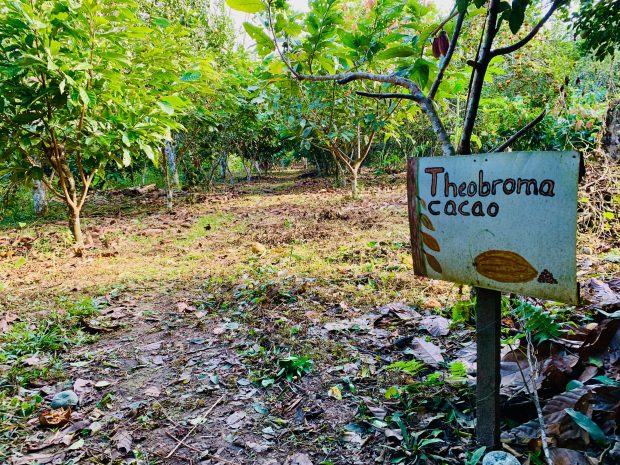The Proposition of Value: Leveraging Carbon Capital to Finance Biodiversity Conservation in Peru
There is currently a strong interest in the global conservation community in employing the sale of forest-based carbon offsets as a new financial stream to support biodiversity conservation initiatives. Our research examines six such projects in Peru to explore if or how “value,” financial and otherwise, is produced and captured through these projects and by whom.
Since the concept of creating markets for “offsetting” greenhouse gas emissions through enhanced carbon capture in forest biomass was first discussed, there has existed an accompanying narrative that such markets would inevitably generate both profits for investors and “co-benefits” in the form of biodiversity conservation and generation of income for local communities. With the majority of biomass-based carbon offsets generated through industrial scale, mono-species plantation forestry, the inevitability of environmental and social co-benefits has been challenged. Extreme fluctuations in the price of offsets in the newly created voluntary and compliance markets has also undermined the presumption that these can provide sustainable, reliable sources of funding for conservation, let alone generate profits for investors. There is also accumulating evidence that the transaction costs of developing and maintaining forest-based offsetting projects are higher than originally predicted and, in many cases, negate profits. Even given these obstacles, a number of for-profit companies, in partnership with international multilateral lending institutions, development organizations and environmental non-profits, continue to attempt to employ the brokering and sale of carbon offsets as a means to finance conservation initiatives throughout the Global South, promising the production of multiple values, the “win-win-win-win” of greenhouse gas reductions, biodiversity conservation, social co-benefits to local communities and profit for investors.
Peru is a leader in utilizing the sale of forest-based carbon offsets to finance conservation initiatives and protected area management. Encompassing Amazon rainforests, Andes alpine terrain, coastal plains and desert, Peru is one of seventeen countries recognized as a megadiverse country, making it the target of significant interest by the international conservation community. The predominance of private finance involved in conservation initiatives is the result of a longstanding neoliberal bent in national government, itself the result of multiple structural adjustment initiatives demanded by international lenders in the 1990s, which has led to a friendliness to market-based solutions and a willingness to devolve or divest control of their considerable natural resources. As part of this trend, the Peruvian national government was an early and enthusiastic adopter of REDD+ initiatives, providing significant ground work and infrastructure for forest-based carbon offsetting.
Given that the direct financial returns from forest-based carbon offsets seem both low, while also high risk, we ask why this approach is being so heavily promoted and implemented as a means to finance conservation? Employing a comparative case study design, we will examine six carbon-financed conservation projects in Peru to explore the set of “value propositions” offered by these projects and for whom to explore what is driving the continued interest and implementation of these schemes. By exploring the mechanisms and rationalities employed by the complex web of actors and entities involved in promoting and implementing these projects, we hope to understand how various types of value (e.g. direct and indirect financial returns, reputational or social license value, political capital, etc.) are produced and captured and the barriers to doing so.

The primary questions we plan to address include:
- What set of roles are required to be played in order to implement projects that integrate forest-based carbon offsetting with biodiversity conservation? What consistency or variation do we see in the sets of actors or entities who take on these roles?
- What added value(s) does the introduction of carbon offsetting bring to these conservation projects?
- What is the specific “value proposition” for each of the actors and entities involved in promoting, supporting or implementing these projects?
- Through what narratives and mechanisms is that value created and by whom? What are the primary barriers to both creating and capturing those values?
- What are the costs and risks associated with these attempts to create value?
- Are the values of some of the actor groups involved in or impacted by these projects that are not represented, or are even denigrated, through these processes?



Research Contacts
Elizabeth Shapiro-Garza, Nicholas School of the Environment, Duke University, elizabeth.shapiro@duke.edu
Andrea González Natera, Nicholas School of the Environment, Duke University, andrea.gonzalez.natera@duke.edu
Yingle Su, Nicholas School of the Environment, Duke University, yingle.su@duke.edu
Relevant Recent Publications
Shapiro-Garza, E., V. Kolinjivadi, G. Van Hecken, C. Windey and J. Casolo. In Press. Praxis in Resource Geography: Tensions between Engagement and Critique in the (Un)Making of Ecosystem Services. [Invited chapter for the Routledge Handbook of Critical Resource Geography, eds. M. Himley, E. Havice and G. Valdivia]
Shapiro-Garza, E., P. McElwee, G. Van Hecken and E. Corbera. 2020. Beyond market logics: Payments for ecosystem services as alternative development practices in the Global South. Lead editor and author of introductory article for special issue of Development and Change 51(1): 3-25. https://doi.org/10.1111/dech.12546
Shapiro-Garza, E. 2020. An alternative theorization of payments for ecosystem services from Mexico: Origins and influence. Development and Change 51(1): 196-223 (IF 1.66)]. https://doi.org/10.1111/dech.12552
Hayes, T., T. Grillos, L. Bremer, F. Murtinho and E. Shapiro-Garza. 2019. Collective PES: More than the sum of individual incentives. Environmental Science and Policy (IF: 5.13) https://doi.org/10.1016/j.envsci.2019.09.010
Pfaff, A., L.A. Rodríguez and E. Shapiro-Garza. 2019. Collective local payments for ecosystem services: New institutions in Mexico interact with existing ‘watershed trust.’ Water Resources and Economics 28. https://doi.org/10.1016/j.wre.2019.01.002
Osborne, T. and E. Shapiro-Garza [ALPHABETICAL ORDER]. 2018. Embedding carbon markets: complicating commodification of ecosystem services in Mexico’s forests. Annals of the Association of American Geographers. 108(1), 88-105. http://dx.doi.org/10.1080/24694452.2017.1343657
Van Hecken, G., V. Kolinjivadi, C. Windey, P. McElwee, E. Shapiro-Garza, F. Huybrechs, and J. Bastiaensen. 2018. Silencing agency in payments for ecosystem services (PES) by essentializing a neoliberal ‘monster’ into being: A response to Fletcher & Büscher’s ‘PES conceit.’ Ecological Economics. 144, 314-318. http://dx.doi.org/10.1016/j.ecolecon.2017.10.023

